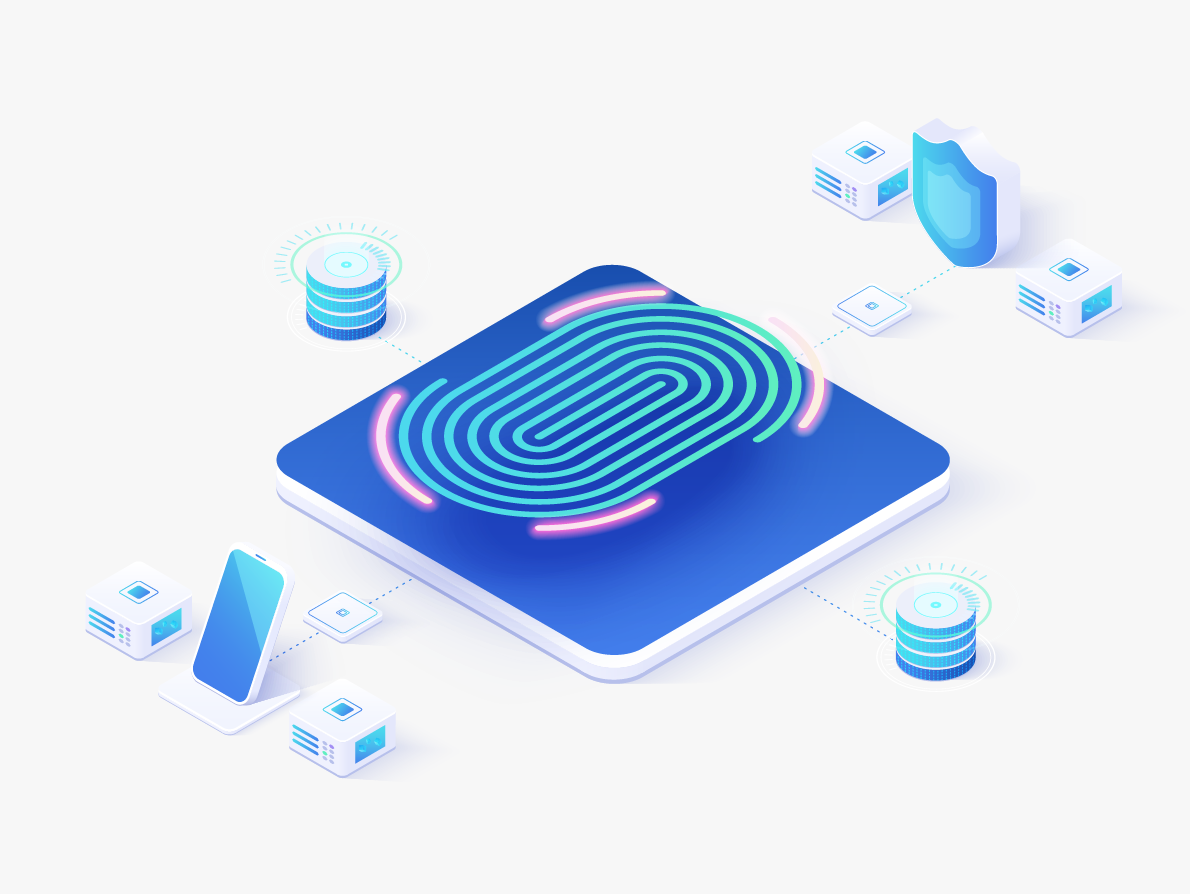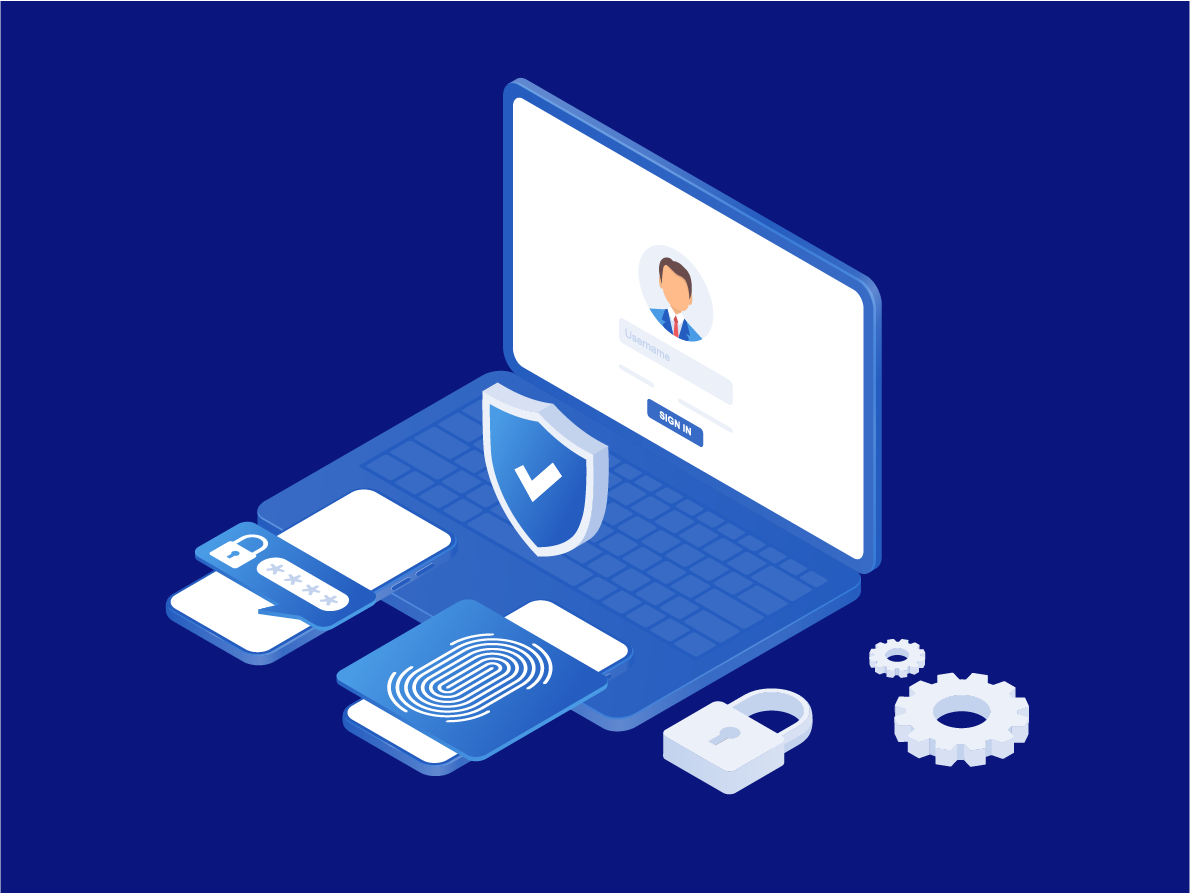
The digital sphere has seen countless innovations in the past decades, leading to the automation of business processes in numerous industries. Many companies now rely on websites and applications to efficiently engage with their clients and publicize their services. Moreover, the advancements in the online world significantly increased media consumption as digital outlets have become a powerful tool.
With many transactions now done online, organizations must employ reliable security measures for their customers. For decades, enterprises have encouraged their clients to use knowledge-based authentication (KBA) credentials to secure their accounts. Passwords and PINs are designed to protect accounts so that only legitimate consumers access them.
However, the widespread reliance on KBA credentials has proven to be unsafe. Cybercriminals are constantly improving their tricks and techniques to expose user passwords, leading to extensive identity theft and account takeover incidents.
Despite the call for a shift to passwordless authentication, knowledge-based login credentials are still dominant, especially in platforms run by small and medium businesses (SMBs). Many institutions still rely on legacy digital security methods, which are prone to advanced mechanisms used by swindlers today.
The Threats in Identity Protection
The rise of the digital world, accelerated by the arrival of the COVID-19 pandemic, has led to a growth in the number of cases of identity theft and data breaches. The Consumer Sentinel Network 2021 report by the Federal Trade Commission (FTC) showed that almost 5.8 million cyber-attacks were reported the previous year. More than 25% of these cases were tagged as identity theft, a staggering increase since 2019.
In addition, the Federal Bureau of Investigation (FBI) also received more than 50 thousand reports of identity theft in 2021. Poor password security can be attributed to more than 80% of data breaches, resulting in billions of dollars in losses annually.
Fraudsters leverage the predominant use of knowledge-based credentials to penetrate online security measures implemented by companies. But apart from the insufficient protection that passwords provide, other factors, like the new normal and remote work norm, play a significant role in the rising exposure of personally identifiable identification (PII) on the internet.
- The New Normal
Industries have experienced extensive disruptions amid the COVID-19 pandemic. But e-commerce and online banking have thrived, allowing consumers to conduct their shopping and financial transactions through digital outlets. Automated operations also made business-critical tasks more efficient for the employees and clients.
Despite this, the developments in the digital sphere also resulted in the exposure of countless credentials and PII. More online transactions mean additional classified data stored in physical and cloud servers, making the internet more enticing for cybercriminals.
With contactless services and digital commerce expected to further dominate in 2022 and beyond, retiring passwords is vital for more secure online dealings. Keeping traditional identity authentication methods, along with users recycling old and common passwords, will aggravate the incidents of identity theft.
- The Remote Work Norm
Another effect of the COVID-19 pandemic is remote work becoming the standard in various sectors. Modern tools and devices allowed organizations to deploy a hybrid working system without compromising the employees' productivity.
But not having the staff at offices significantly increases the risks of fraud. With no one physically monitoring them, outsiders can quickly steal data from the employees’ devices, especially if the staff handles critical PII such as login credentials, addresses, and card numbers. In addition, using vulnerable passwords will allow third parties to steal their credentials to penetrate their target system.
Apart from this, other people on the property also pose risks in committing data theft. Family members, roommates, and visitors can all, whether intentionally or not, expose sensitive data from the devices, especially if left unattended.
- Ransomware and Malware
Despite being overlooked most of the time, malware has been one of the cybercriminals' most used software attacks in the past decade. It is usually harder to detect than other forms of online crimes and can lead to the high exposure of company and client information if not immediately noticed.
These attacks typically happen when employees install seemingly legitimate applications on their devices. The software will then collect information transmitted in the machine, including credentials, geolocation, and even web cookies. The gathered data will either be used for account takeovers (ATO) or sold on the dark web.
Moreover, stolen credentials are now also used in ransomware attacks. Bad actors use the stolen information to gain initial entry to their target system. Then they will install the harmful software in the network and hold the stored data hostage until the firm pays the amount that the hackers demand. Ransomware incidents have swelled in recent years, with the FBI reporting over 3,500 cases in 2021.
The Growing Need for Passwordless Authentication Today
With cases of identity theft and data breaches on the rise, pivoting to more sophisticated online security methods is imperative. Using modern authentication solutions, such as a biometric digital signature, allows companies to bolster their data protection while maintaining a positive user experience.
The Fast Identity Online (FIDO) Alliance is at the forefront of the global movement for passwordless identity proofing measures. Their FIDO2 passwordless authentication standards are widely adopted by industry leaders, along with numerous SMBs. They aim to reduce the reliance on susceptible passwords in securing user accounts. LoginID’s FIDO-certified suite of solutions helps businesses implement processes to deliver a seamless passwordless authentication UX (user experience).
One of the highly used modern identity solutions leveraged in various industries is biometric authentication. The use of biological data for signing documents has been around for decades, but it has been gaining real traction in the identity security sector in recent years. Fingerprints and face scanners for identity proofing are not easy to duplicate, making them an ideal replacement for traditional login credentials.
Investing in modern online security solutions and abiding by the FIDO2 biometric authentication standards will boost the digital security methods of countless companies. It helps complex industries, such as finance and e-commerce, make their networks less enticing for cybercriminals. This will ensure that the information they store is safe and will have little to no chance of getting compromised.
LoginID's FIDO2 passwordless authentication solution is highly secure, simple to integrate, and reduces friction during the onboarding and signing-in process. It enables financial institutions, banks, card issuers, and blockchain platforms to offer clients strong authentication and identity verification across desktop and mobile platforms.
To learn how LoginID can equip companies and businesses with the necessary real time fraud prevention tools, connect with our experts today at sales@loginid.io. You may also:
- register for a free account to get immediate access to LoginID’s passwordless authentication solution.
- use our simple tutorial to see our biometric authentication solution in action
- read our developer documentation
Sources:


